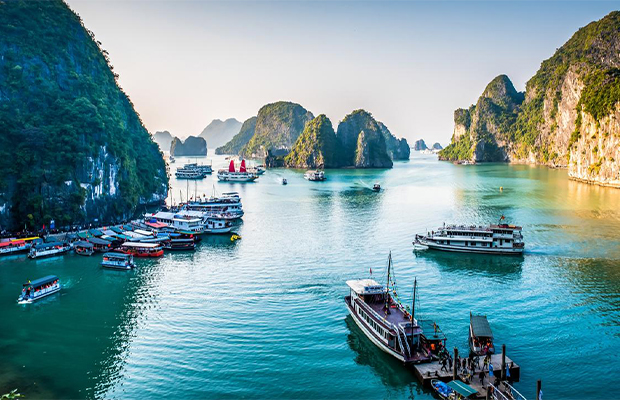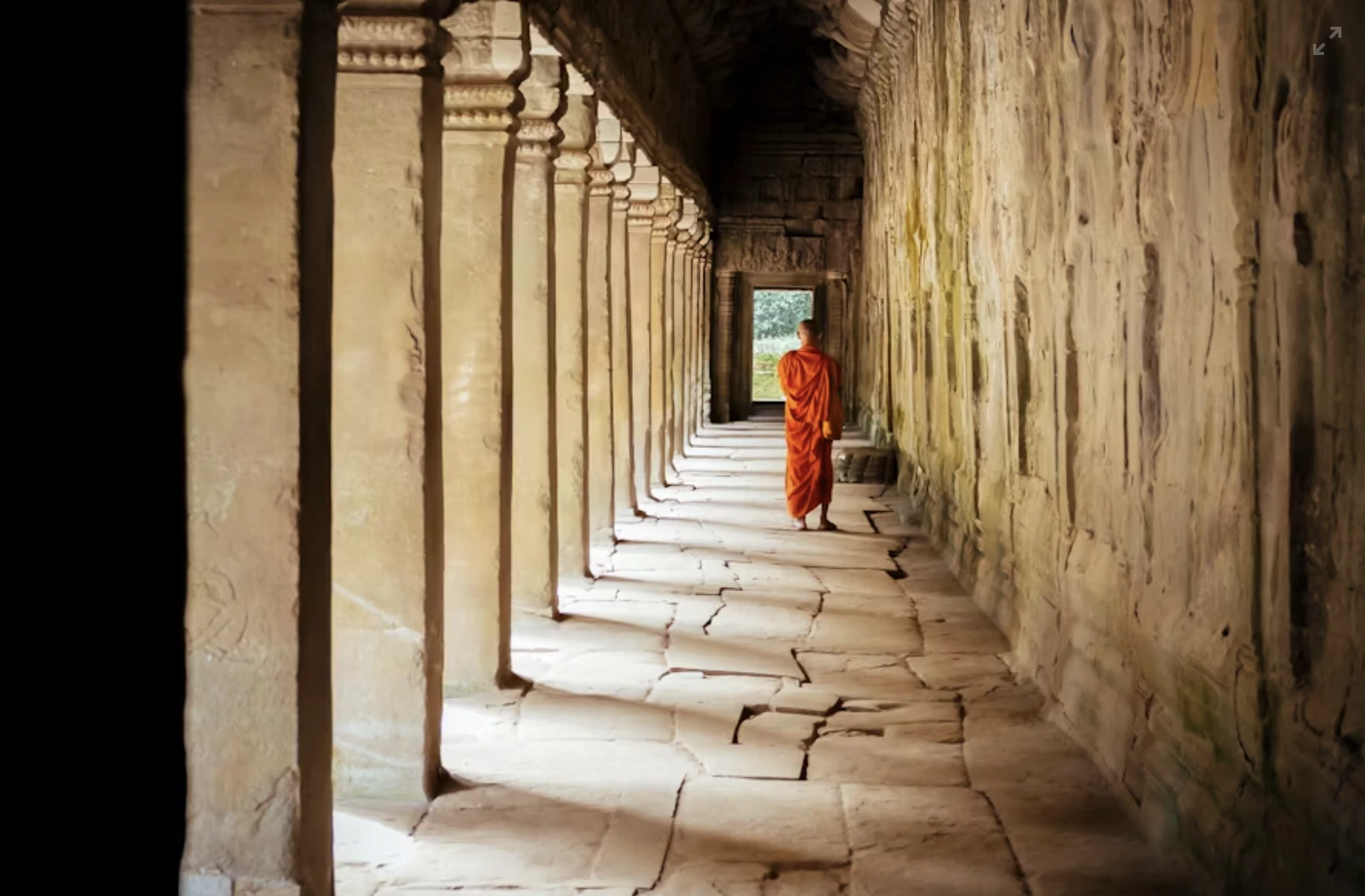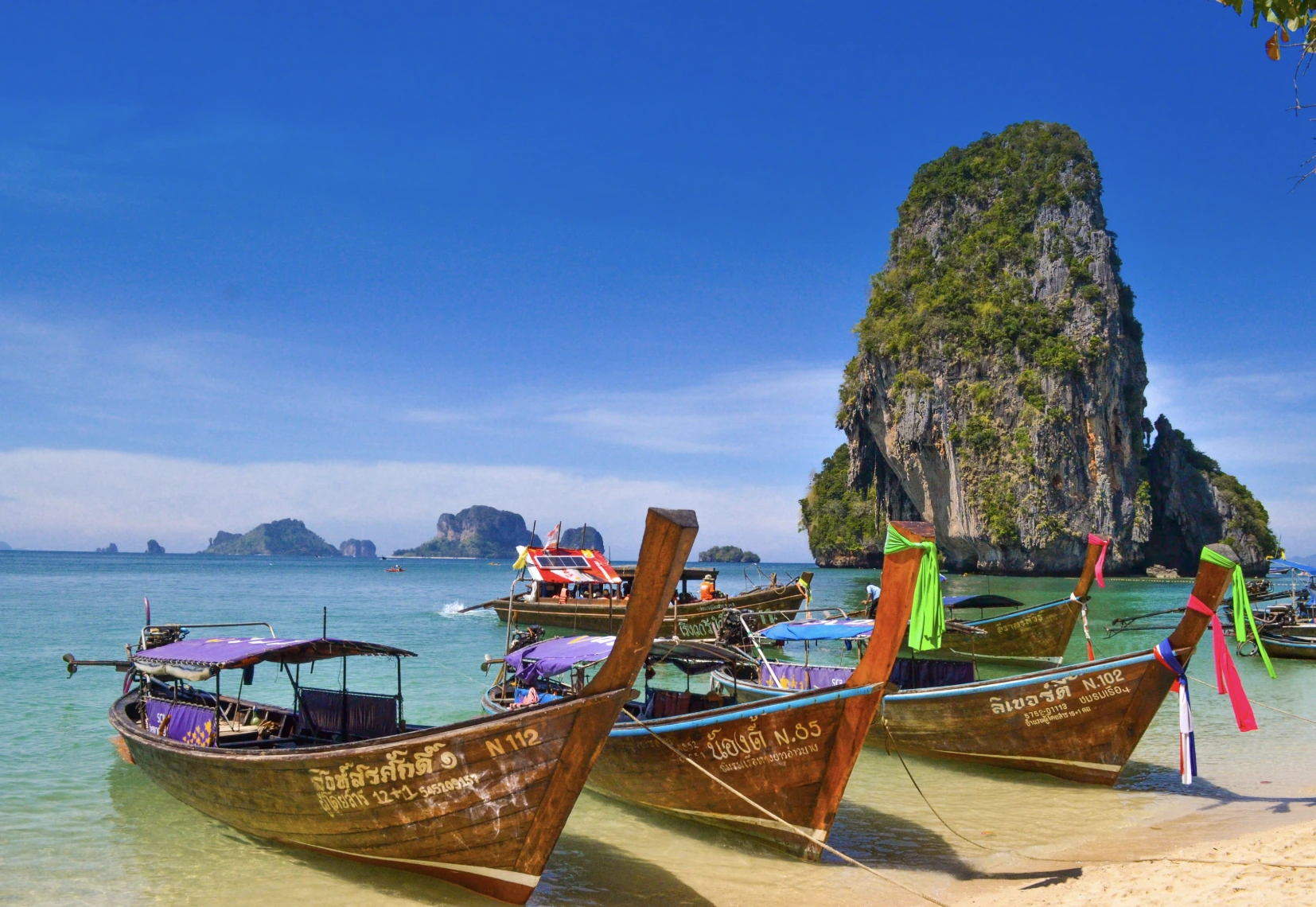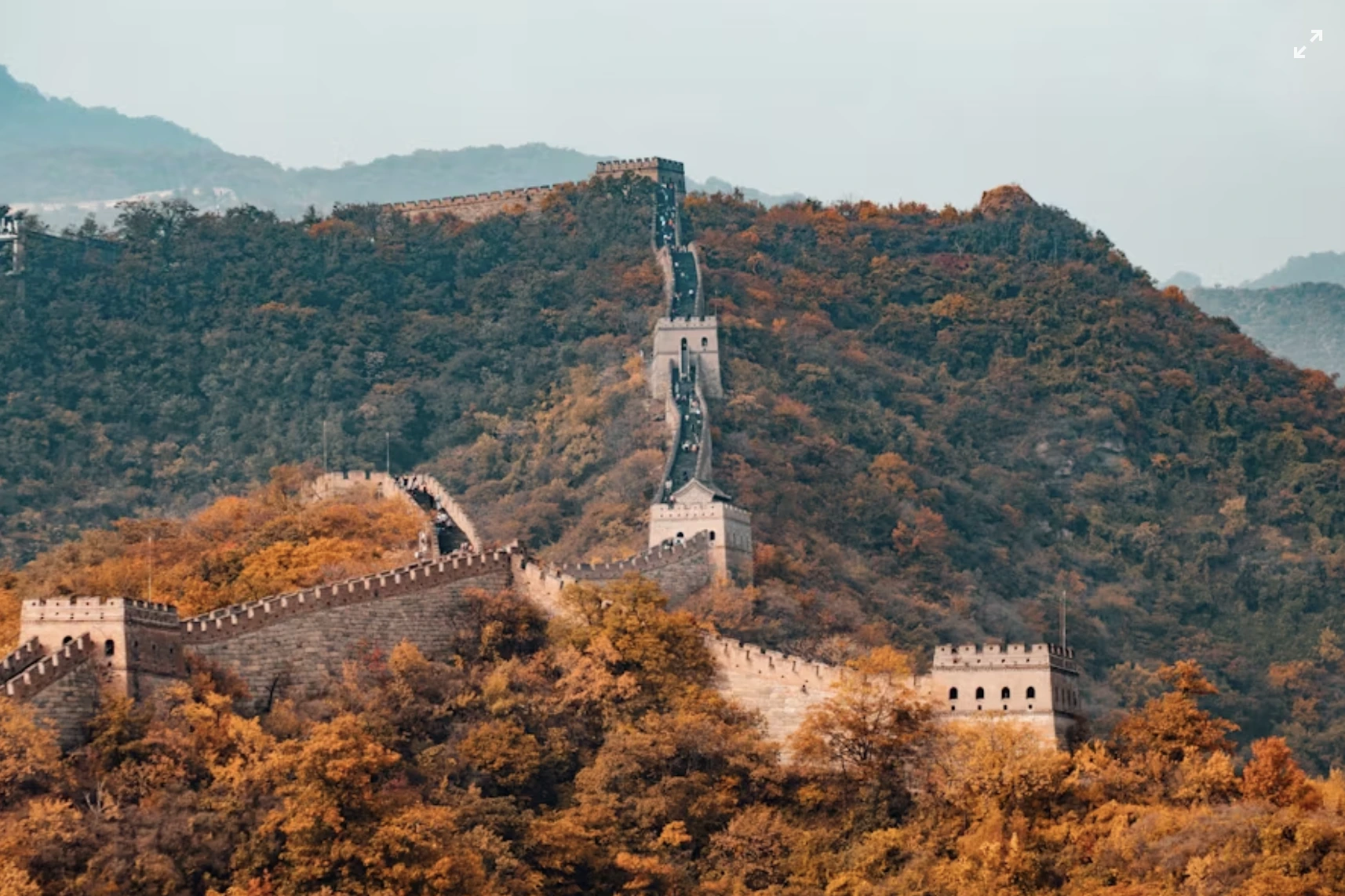20 Facts Need to Know About Lunar New Year (Tet) in Vietnam
Tết is more than just a New Year celebration – it is a time for family reunions, cultural preservation, and hopes for prosperity. Rooted in ancient traditions, the Lunar New Year is the most significant and celebrated festival in Vietnam.
It is the highlight of the year and a great opportunity for travelers to immerse themselves in local customs and festivities. There is a lot to uncover about Tết, here are the top 20 facts you need to know.
 1. Tết Is the Most Important Festival in Vietnam – Family Reunion Day
1. Tết Is the Most Important Festival in Vietnam – Family Reunion Day
 2. Tet Represents the Feast of the First Morning of the New Year
2. Tet Represents the Feast of the First Morning of the New Year
 3. Each Lunar New Year Is Represented by a Zodiac Animal
3. Each Lunar New Year Is Represented by a Zodiac Animal
 4. Vietnamese New Year Is Different from Chinese New Year
4. Vietnamese New Year Is Different from Chinese New Year
 5. Vietnamese New Year Is Celebrated Either in January or February
5. Vietnamese New Year Is Celebrated Either in January or February
 6. Tet Celebrations Last Much Longer than the 7-Day Public Holiday
6. Tet Celebrations Last Much Longer than the 7-Day Public Holiday
 7. Honoring Ong Tao Marks the Beginning of Vietnamese Lunar New Year
7. Honoring Ong Tao Marks the Beginning of Vietnamese Lunar New Year
 8. Preparation for Lunar New Year Begins Weeks in Advance
8. Preparation for Lunar New Year Begins Weeks in Advance
 9. Vietnamese Decorate Homes with Flowers and Plants during Tet
9. Vietnamese Decorate Homes with Flowers and Plants during Tet
 10. Vietnamese Lunar New Year Is Celebrated for Three Days
10. Vietnamese Lunar New Year Is Celebrated for Three Days
 11. Traditional Tet Dinner Is an Important Occasion for Family Members
11. Traditional Tet Dinner Is an Important Occasion for Family Members
 12. Important Traditions: Ancestor Worship, Respect to Elders, and Red Envelopes
12. Important Traditions: Ancestor Worship, Respect to Elders, and Red Envelopes
 13. Vietnamese Buy Salt, Visit Pagodas or Temples on New Year’s First Day
13. Vietnamese Buy Salt, Visit Pagodas or Temples on New Year’s First Day
 14. Each Region in Vietnam Has Unique Food for Lunar New Year
14. Each Region in Vietnam Has Unique Food for Lunar New Year
 15. Events During Tet: Colorful Parades, Traditional Music Performances, and Fireworks Display
15. Events During Tet: Colorful Parades, Traditional Music Performances, and Fireworks Display
 16. Avoid “Unlucky” Colors and Foods and Talking About Debts During Tet
16. Avoid “Unlucky” Colors and Foods and Talking About Debts During Tet
 17. Top Destination to Celebrate Tet in Vietnam for Travelers: Hanoi, Hoi An, Ho Chi Minh City
17. Top Destination to Celebrate Tet in Vietnam for Travelers: Hanoi, Hoi An, Ho Chi Minh City
 18. Many Shops & Museums will be Off-work The Day Before Tet
18. Many Shops & Museums will be Off-work The Day Before Tet
 19. Hotels and Transportation Should Be Booked in Advance
19. Hotels and Transportation Should Be Booked in Advance
 20. The Price of Accommodation Will Increase 10%-20% During Tet
20. The Price of Accommodation Will Increase 10%-20% During Tet
1. Tết Is the Most Important Festival in Vietnam – Family Reunion Day
For Vietnamese families, Tết symbolizes a fresh start, both spiritually and materially. It’s a time to cleanse the past year's misfortunes, pay respects to ancestors, and welcome new opportunities. It’s important to do these things together with family, and, as the biggest national festival, Tet gives families a chance to reunite.
With everyone on holiday, families spread around the country are able to travel and be together for Tết. The festival allows people to reconnect with loved ones, reaffirm cultural values, and set the tone for the upcoming year. Family connections are strengthened with shared activities, including hearty meals and decorating the house together.

Vietnamese New Year reunion dinner.
2. Tet Represents the Feast of the First Morning of the New Year
The full name of Tết is Tet Nguyen Dan. The word “Nguyen” means the beginning, and “Dan” means the dawn. Together, Tet represents the feast of the first morning of the New Year.
The meal that welcomes in the New Year includes many special dishes. Ga luoc, boiled chicken, is a dish eaten during many festivals and a staple during Tết. Xoi, sticky rice, made with ingredients like mung beans, corn, meat, and fish, is seen as one of the most important festival foods.
There is even a special Vietnamese New Year’s cake. Chung cake is crafted from ingredients like phrynium leaves, glutinous rice, mung beans, pork belly, and salt, and embodies the perfect fusion of earthly and celestial elements.

Vietnam New Year's Cake-Chung Cake.
3. Each Lunar New Year Is Represented by a Zodiac Animal
The lunar calendar has a 12-year cycle, and each lunar year is represented by one of 12 animals in the Vietnamese zodiac: Rat, Ox, Tiger, Cat, Dragon, Snake, Horse, Goat, Monkey, Rooster, Dog, and Pig. These zodiac signs influence personality traits, fortunes, and even matchmaking in Vietnamese culture.
For instance, those born in the Year of the Dragon are considered strong and charismatic, while people born in the Year of the Cat are seen as gentle and intelligent. The zodiac plays a key role in Tết decorations, traditional performances, and even conversations, as people often ask, “What is your zodiac sign?”
4. Vietnamese New Year Is Different from Chinese New Year
While most likely sharing similar roots and with some common customs, Vietnamese New Year has evolved its own set of unique traditions that reflect the country’s distinct culture and identity. If you’re familiar with Chinese New Year, then you’re no stranger to the lunar calendar, also used for Tết. You also won’t be surprised to see children receiving red envelopes with lucky money as part of the shared traditions.
Unique to Vietnam is the emphasis on ancestor worship and the family rituals that go with that. In addition to the zodiac differences, such as the Cat instead of the Rabbit, distinctive food like banh chung or banh tet sticky rice cake is unique to Vietnam’s celebration.

Vietnamese cat animal sign.
5. Vietnamese New Year Is Celebrated Either in January or February
The exact date of Tet is determined by the lunar calendar. Since it is not fully in sync with the Western calendar, this causes the date of Tết to vary from year to year. It is determined by the new moon and usually falls between late January and mid-February. In 2025, Tết will fall on January 29th, bringing in the year of Snake. The next year, the Year of the Horse will arrive on February 17th, 2026.
|
Zodiac Sign |
Years |
New Year Date |
|
Snake |
2025, 2037, 2049 |
January 29 (Tuesday) |
|
Horse |
2026, 2038, 2050 |
February 17 (Saturday) |
|
Goat |
2027, 2039, 2051 |
February 6 (Thursday) |
|
Monkey |
2028, 2040, 2052 |
January 26 (Wednesday) |
|
Rooster |
2029, 2041, 2053 |
February 13 (Tuesday) |
|
Dog |
2030, 2042, 2054 |
February 3 (Friday) |
|
Pig |
2031, 2043, 2055 |
January 23 (Wednesday) |
|
Rat |
2032, 2044, 2056 |
February 11 (Monday) |
|
Buffalo |
2033, 2045, 2057 |
January 31 (Sunday) |
|
Tiger |
2034, 2046, 2058 |
February 19 (Saturday) |
|
Cat |
2035, 2047, 2059 |
January 22 (Sunday) |
|
Dragon |
2036, 2048, 2060 |
February 10 (Wednesday) |
6. Tet Celebrations Last Much Longer than the 7-Day Public Holiday
Although the government designates a seven-day public holiday for Tết, the preparation and celebration often span several weeks. The highlight of the festival lasts for 3 days, including the day before New Year's Eve, New Year's Eve, and New Year's Day, but this is only a small part of Tết.
Families begin preparing weeks in advance as cleaning and decorating is a big part of the holiday tradition. After the main celebrations, festivities continue with people visiting friends and neighbors to exchange good wishes.

Cleaning house during Vietnamese New Year.
Some festivals and celebrations continue until much later than the official Tet public holiday. The Perfume Pagoda Festival lasts from the 6th day of the first lunar month to the end of the 3rd lunar month. It’s an important spiritual festival when pilgrims travel to the Perfume Pagoda 40 km southwest of Hanoi to light incense, say prayers, and make offerings of flowers and fruit.
7. Honoring Ong Tao Marks the Beginning of Vietnamese Lunar New Year
The rituals honoring the Kitchen Gods mark the unofficial beginning of Tết. These deities are believed to oversee household affairs and report to the Jade Emperor on the family’s behavior. It takes place on the 23rd day of the 12th lunar month with rituals that underscore the importance of the home as the center of life and spirituality in Vietnam.
Traditions have evolved over time and vary from place to place, but their core elements persist. First, families clean their homes to welcome good fortune. Then, a feast is prepared with dishes like steamed sticky rice and porridge. Throughout all of this, live golden carp are kept in a large bowl of water.
After the worshipping ceremonies are finished, the carp are set free into lakes or rivers. It is a gesture of respect towards living things and is connected to the legend that the kitchen gods can only ascend to heaven with the help of golden carp.

The kitchen God is worshipped in Vietnam during the Vietnamese New Year.
8. Preparation for Lunar New Year Begins Weeks in Advance
There is a noticeable buzz of activity in Vietnam weeks ahead of the Lunar New Year as families begin to prepare. Families clean their homes to rid them of bad luck, buy festive foods, and prepare traditional dishes like pickled onions, giò lụa (Vietnamese sausage), and xôi gấc (red sticky rice).
You will see people out buying new clothes, styling their hair, and buying furniture and accessories to spruce up their homes. The markets are packed with shoppers buying auspicious red and gold decorations and paper lanterns featuring the New Year’s zodiac animal.
9. Vietnamese Decorate Homes with Flowers and Plants during Tet
Every home and office will feature at least one beautiful plant on display as part of symbolizing the coming of spring. The big three are peach blossoms, apricot blossoms, and kumquat trees, which represent important concepts for the New Year. Other flowers, such as lisianthus flowers, dahlias, and marigold flowers, are chosen simply for their beauty.
The pink and red colors of peach blossoms are the symbol of Tet in the north, and stand for prosperity and good luck. Yellow apricot blossoms are the emblem of Tet in the south.
Yellow is a regal color in Vietnam and represents luck, wealth, and happiness. Kumquat trees also represent prosperity. Vietnamese families look for trees with many fruits of similar size, both ripe and green, and big, shiny green leaves.

Vietnamese people decorate their homes with flowers for New Year.
10. Vietnamese Lunar New Year Is Celebrated for Three Days
Tet, or Vietnamese Lunar New Year, is officially celebrated for three days, but its influence extends far beyond this period. The first day of Tet is the most important, dedicated to welcoming the ancestors and spending time with close family. Families engage in rituals, such as lighting incense and offering food at ancestral altars.
The second day is reserved for visiting relatives and close friends and sharing well-wishes for the New Year. The third day typically involves visiting distant acquaintances and teachers to show respect.
Though the official celebrations last three days, Tet's spirit lingers in Vietnamese households for a week or more, blending tradition with modern festivity.

Vietnamese worship their ancestors during the New Year.
11. Traditional Tet Dinner Is an Important Occasion for Family Members
A central part of Tet is the traditional Tet dinner, a time when family members gather to share food and bond. These meals are lavish, featuring dishes like banh chung (square sticky rice cakes), gio lua (Vietnamese pork sausage), and pickled vegetables. Each dish has a symbolic meaning, such as prosperity, longevity, or happiness.
The dinner is also a time for storytelling, laughter, and reconnecting with loved ones, some of whom travel great distances to join the feast. The warmth of these meals reflects the spirit of Tet, emphasizing family unity and gratitude for the past year. Family members might exchanges gifts, and red envelopes with lucky money are given to children.
12. Important Traditions: Ancestor Worship, Respect to Elders, and Red Envelopes
Tet revolves around deep-rooted traditions that connect the present to the past. Ancestor worship is a cornerstone of Tet. In the days before the festival, families visit the graves of their ancestors to tidy and decorate them. Altars are also prepared and adorned with offerings like fruits, flowers, and incense to invite the spirits of ancestors to join the celebrations.
Paying respects to elders is another crucial custom, symbolizing gratitude and seeking blessings. Children and younger family members express their wishes to elders through words or traditional gestures.
In return, elders gift red envelopes filled with money, representing good fortune and prosperity. These traditions create a heartfelt exchange of love and blessings, making Tet a meaningful cultural experience.

Vietnamese children receive red envelopes for Vietnamese New Year.
13. Vietnamese Buy Salt, Visit Pagodas or Temples on New Year’s First Day
On the first day of Tet, Vietnamese people follow unique customs to ensure a prosperous year ahead. One popular tradition is buying salt, symbolizing wealth and good luck, as salt is considered a precious commodity.
Families also visit pagodas or temples to pray for health, success, and happiness. It’s the busiest time of year for these spiritual places. The acts of devotion mark the beginning of the New Year.
People often bring offerings, light incense, and seek blessings from monks or deities. These rituals highlight the spiritual essence of Tet, where individuals seek harmony and hope for a brighter future.

Vietnamese go to temples for worship.
14. Each Region in Vietnam Has Unique Food for Lunar New Year
Vietnam’s diverse geography and cultural traditions are reflected in the regional Tet cuisines. North and south Vietnam have different food for Tet. In the north, banh chung, a square-shaped sticky rice cake, is a staple, symbolizing the earth. Xoi gac is a dish with a symbolic red color usually placed at the center of the Tet feast.
The south prefers banh Tet, similar to banh chung, a round cake that symbolizes fullness and completeness. Central Vietnam is known for its intricate dishes like nem chua (fermented pork) and pickled vegetables and fruit like carrots and papaya.
Each region incorporates local ingredients and flavors, creating a culinary tapestry that enriches the Tet experience. This diversity ensures that no matter where you celebrate Tet, you’ll enjoy a feast rooted in history and tradition. Enjoy the food in the lively social atmosphere of places like Hoan Kiem Lake in Hanoi and Tao Dan Park in Ho Chi Minh City.

Banh Chung food in North Vietnam.
15. Events During Tet: Colorful Parades, Traditional Music Performances, and Fireworks Display
Tet is marked by vibrant public celebrations that bring communities together. Colorful parades featuring lion dances, drummers, and performers in traditional attire fill the streets with energy. Traditional music performances and folk songs resonate in parks and public spaces, preserving Vietnam’s cultural heritage.
In Hanoi, head to Ba Dinh Square or in front of the Hanoi Opera House to see lion dances, and folk music. The Tao Dan Park Tet Festival in Ho Chi Minh City has cultural exhibitions and food stalls. Da Nang hosts a Dragon Bridge Show with a fire-breathing dragon performance.
The highlight of Tet is the fireworks displays, lighting up the skies on New Year’s Eve in major cities like Hanoi and Ho Chi Minh City. These events symbolize the joy of new beginnings and are eagerly awaited by locals and tourists alike, creating unforgettable memories for all who partake in the festivities.
The best place to watch fireworks in Hanoi is around Hoan Kiem Lake. Magnificent fireworks displays are held all over Ho Chi Minh City, particularly around Landmark 81 and the Thu Thiem Tunnel Area. In Da Nang, you can watch the light show from the peaceful setting of My Khe Beach.

Fireworks display Vietnam New Year.
16. Avoid “Unlucky” Colors and Foods and Talking About Debts During Tet
Tet is a time of positivity and auspicious traditions, so avoiding “unlucky” actions is taken seriously.
Colors like black and white, associated with mourning, are avoided in favor of vibrant red and yellow, symbolizing happiness and wealth. Instead, people will dress in new clothes that show off vibrant colors.
Certain foods, such as duck meat, are considered inauspicious because of their perceived bad luck. Conversations about debts or misfortunes are also things to avoid while visiting Vietnam, as they are believed to bring negativity into the New Year. Observing these customs ensures that Tet remains a time of optimism and sets a harmonious tone for the year ahead.

The Vietnamese wear new red clothes.
17. Top Destination to Celebrate Tet in Vietnam for Travelers: Hanoi, Hoi An, Ho Chi Minh City
Vietnam offers incredible destinations for travelers to experience Tet. Hanoi captivates visitors with its traditional Tet markets, such as those at Hang Luoc Street, and cultural performances around Hoan Kiem Lake. Local markets will be full of flowers, like the blossoming peach tree that is the symbol of Tet in the north.
In Hoi An, the ancient town comes alive with lantern festivals, creating a magical atmosphere. In the Old Town, many shops and restaurants remain open, and people head to the lake at night to watch performances.

New Year street scene in Hoi An, Vietnam.
Ho Chi Minh City dazzles with grand fireworks displays, flower exhibitions like Nguyen Hue Flower Street, and a modern take on Tet festivities. Some of the city’s nightlife remains active, and local festivals like the Tao Ban Flower Festival and Nguyen Hue Flower Festival offer food, folk music, and games.
Each destination offers a unique perspective, making Tet a memorable experience for travelers seeking cultural immersion and celebration.
18. Many Shops & Museums will be Off-work The Day Before Tet
As Tet approaches, businesses across Vietnam begin to close, especially shops and museums. The day before Tet is particularly significant, as families focus on final preparations, including cleaning homes, cooking special meals, and paying respects to ancestors.
Tourists visiting during this time should plan accordingly, as attractions and services may be limited. However, the festive atmosphere, with bustling markets and decorated streets, compensates for these closures, offering a glimpse into the cultural vibrancy of Vietnam’s most cherished holiday.
It’s a great time to be out in the city soaking up local culture. In Hanoi, for example, while the main attractions are closed, you can join in celebrations taking place around Hoan Kiem Lake and other popular areas.

Activities are held at Hoan Kiem Lake in Hanoi, Vietnam during Chinese New Year.
19. Hotels and Transportation Should Be Booked in Advance
Tet is one of best time to visit Vietnam. The whole country is on holiday, with people returning to their hometowns and tourists flocking to experience the celebrations.
As a result, hotels and transportation options fill up quickly. Booking in advance is essential to secure accommodations and travel arrangements at reasonable rates. Major cities like Hanoi and Ho Chi Minh City may experience higher demand, so early planning ensures a smoother trip. This foresight allows travelers to enjoy the festivities without the stress of last-minute logistics.
For the best chance of getting the dates you want, make reservations at least three months in advance. Not only will this help you secure a booking, but you’re also more likely to lock in a good rate before prices rise as the season approaches.
20. The Price of Accommodation Will Increase 10%-20% During Tet
Tet sees a noticeable increase in the cost of accommodation, with prices rising by 10%-20% due to increased demand. Popular destinations, like Hanoi and Ho Chi Minh City, experience the most significant price hikes.
Despite this, the unique cultural experiences Tet offers make it a worthwhile time to visit. You can manage your budget by booking early or exploring lesser-known destinations during this period. The extra expense is often outweighed by the rich traditions and festive energy that make Tet a one-of-a-kind experience.
Traveling to less touristy destinations or staying outside the center of big cities can also help you manage your budget. The festive atmosphere will be present everywhere, so no matter where you stay, you can have an authentic Tet Experience.

Hotel during Vietnamese New Year.
21. Try Not to Bargain during Vietnamese New Year
Bargaining, a common practice in Vietnam, is generally discouraged during Tet. Vendors see this time as one for auspicious beginnings and prefer smooth transactions without disputes.
Bargaining might be viewed as disrespectful or bring bad luck for the seller’s year ahead. Instead, paying the quoted price is a gesture of goodwill and respect for the holiday spirit. Travelers can use this time to embrace the generosity and warmth of Tet, ensuring positive interactions with locals and contributing to the festive harmony.
Conflict and arguments, in general, should be avoided throughout the holiday season. Tet is a time to wish people greetings, and arguing is an inauspicious way to celebrate the New Year.
Conclusion
Tet in Vietnam is a fascinating blend of tradition, celebration, and community spirit. Whether observing family rituals, enjoying unique regional dishes, or joining public festivities, visitors can immerse themselves in the cultural richness of the Vietnamese Lunar New Year.
By understanding and respecting these customs during your Vietnam tours, your Tet experience will be both meaningful and unforgettable.
More Related Vietnam Travel Planning Articles
Most Popular Vietnam Tour Packages
-

 8 Days Best of Vietnam Tour Package
8 Days Best of Vietnam Tour PackageHanoi - Halong Bay - Hoi An - Saigon - Mekong Delta – Saigon
Explore Vietnam's fascinating charm on an exciting journey through its famous cities and beautiful landscapes. This carefull ...
-

 7 Days Southern Vietnam Essential Relaxing Tour
7 Days Southern Vietnam Essential Relaxing TourSaigon – Mekong Delta – Can Tho – Phu Quoc
Prepare for an amazing 7-day adventure across Vietnam's top spots. This well-organized tour invites you to discover the heart ...
-

 7 Days Northern Vietnam Historical & Natural Tour Package
7 Days Northern Vietnam Historical & Natural Tour PackageHanoi – Sapa - Halong Bay - Ninh Binh - Hanoi
Start in Hanoi, a city rich in history and culture. Explore the beautiful Sapa rice fields, the peaceful countryside of Ninh ...
-
 14 Days Highlights of Vietnam from North to South
14 Days Highlights of Vietnam from North to SouthHanoi – Sapa - Halong Bay – Hue – Hoi An – Saigon – Can Tho – Phu Quoc
Find the very best of Vietnam from North to South. From the vibrant streets of Hanoi to the terraced beauty of Sapa and Halon ...
Ask Us A Question For Free

.gif)





































.jpg)

